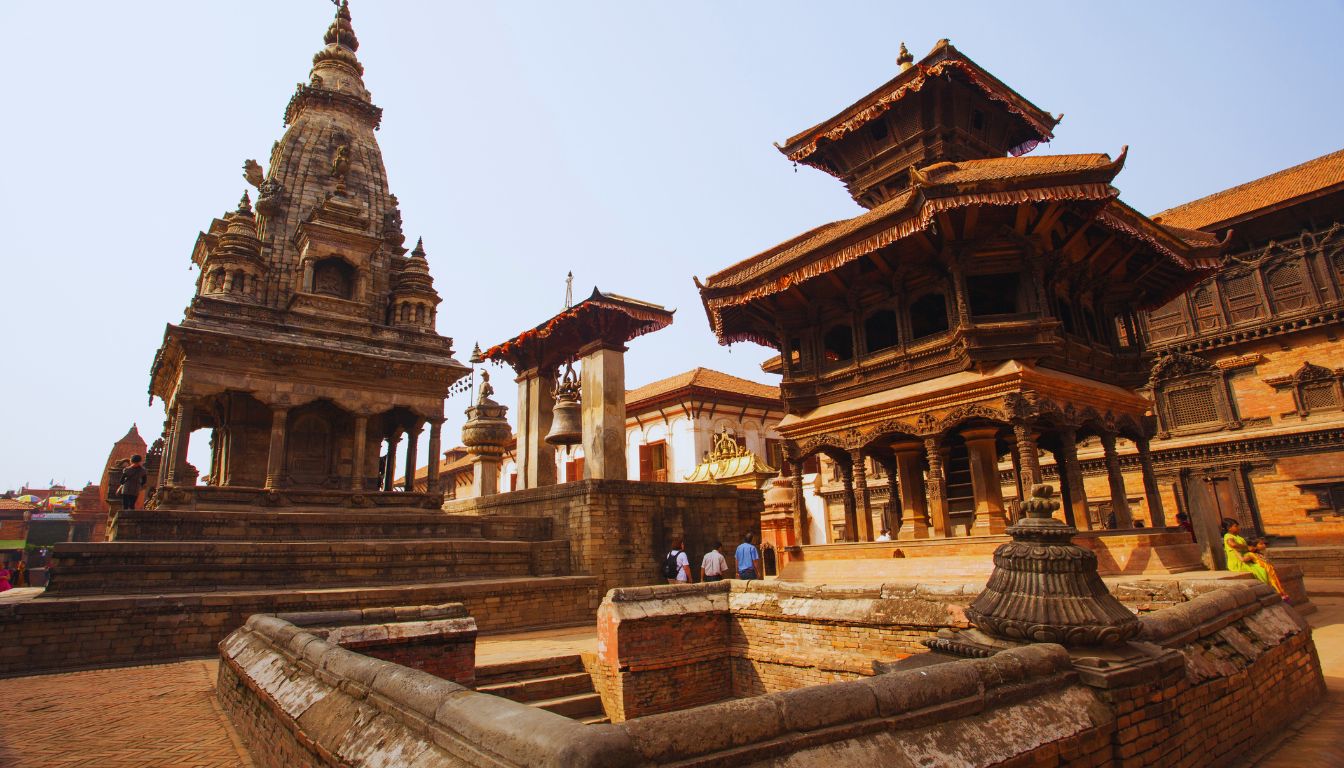Bhaktapur, Nepal
Where ancient rituals meet living traditions, Bhaktapur stands as Nepal’s cultural jewel. This UNESCO World Heritage site, known as the “City of Devotees,” preserves the medieval Newari civilization in its purest form. Here, master craftsmen shape clay into pottery, woodcarvers create intricate masterpieces, and centuries-old festivals continue to mark the rhythm of daily life.
This guide reveals local secrets and cultural treasures, transforming your visit into a memorable journey.
Table of Contents
Best Places to Visit
- Durbar Square: Medieval royal palace complex and temples
- Taumadhi Square: Home to Nyatapola Temple, Nepal’s tallest
- Potter’s Square: Center of traditional pottery making
- Dattatreya Square: Ancient trading center with woodcarving
- Peacock Window: Famous 15th-century wooden artwork
- Pottery Square: Watch artisans at their ancient craft
Must-Visit Cultural Landmarks
- Nyatapola Temple: Five-story pagoda temple
- Palace of 55 Windows: Masterpiece of wood carving
- Bhairavnath Temple: Dedicated to Bhaktapur’s guardian deity
- Golden Gate: Nepal’s most beautiful golden portal
- National Art Gallery: Collection of ancient manuscripts
- Dattatreya Temple: Oldest temple in Bhaktapur
Cultural Insights & Traditions
Bhaktapur’s culture centers around Newari traditions and religious devotion. Daily life intertwines with ancient customs, from morning temple visits to evening aarti ceremonies. The city maintains its medieval layout and social structure, with neighborhoods traditionally organized by occupation. Local festivals, particularly Bisket Jatra and Gai Jatra, showcase living heritage through elaborate rituals and celebrations.
Top Cultural Experiences
- Pottery Making: Learn from master craftsmen
- Wood Carving Workshops: Observe traditional artisans
- Newari Cooking Classes: Master local cuisine
- Temple Ceremonies: Witness daily rituals
- Thanka Painting: Learn traditional Buddhist art
- Cultural Dance Shows: Experience traditional performances
- Festival Participation: Join local celebrations when possible
Best Time to Visit
The ideal time to visit is during the dry season (October to April) when weather is clear and temperatures pleasant. Spring (March-April) brings the spectacular Bisket Jatra festival. Monsoon season (June-September) offers lush landscapes but can affect outdoor activities. Winter (December-February) provides clear mountain views and fewer tourists.
How to Get Around
Bhaktapur is best explored on foot:
- Walking is the primary mode of transport
- No vehicles allowed in heritage areas
- Local tempo (three-wheeler) services
- Taxis available for longer distances
- Bicycle rentals for surrounding areas
- Guided walking tours recommended
Where to Stay
- Near Durbar Square: Heart of historic district
- Pottery Square: Authentic neighborhood experience
- Dattatreya Square: Quiet traditional area
- Outside City Walls: Modern amenities
- Hanumante River Area: Peaceful settings
- Near Kamal Pokhari: Local community area
Best Places to Book Your Trip
Planning your dream trip is easy with trusted travel platforms. To secure the best deals on flights, accommodations, and tours, check out:
- Booking.com: Offers a wide range of hotels, apartments, and hostels to suit every budget.
- GetYourGuide: Book unforgettable experiences like guided tours, cooking classes, and fast-track passes.
- Expedia: A great platform for bundling flights, hotels, and car rentals for a seamless booking experience.
- Skyscanner: Perfect for finding the best deals on flights.
Pro Tips for Visitors
- Purchase Durbar Square ticket early morning
- Respect temple customs and dress codes
- Learn basic Nepali greetings
- Try local Newari cuisine specialties
- Photography may require permits in some areas
- Visit pottery squares early morning
- Carry cash – cards aren’t widely accepted
- Wear comfortable walking shoes
- Support local artisans directly
- Stay hydrated and carry water
- Book accommodations in advance during festivals
- Consider hiring a local guide for cultural insights
- Watch for uneven cobblestones
- Respect local customs during ceremonies
Immerse yourself in Bhaktapur’s timeless atmosphere, where every temple bell and craftsman’s tool tells a story of Nepal’s rich cultural heritage. From dawn prayers to dusk festivals, this living museum offers an authentic glimpse into a civilization that has preserved its essence through centuries of change.
Traditional Juju Dhau of Bhaktapur: A Local’s Guide to Authenticity













